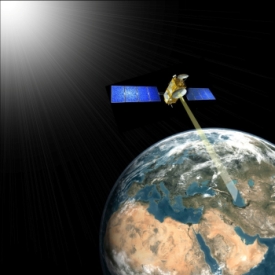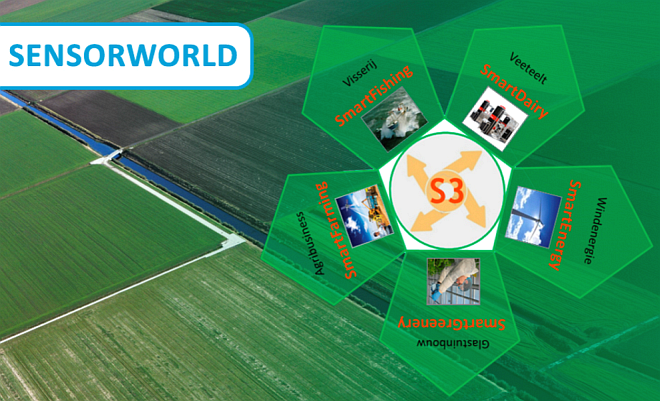
Remote Sensing input for SensorWorld
In collaboration with seven SME partners, the National Aerospace Laboratory of the Netherlands (NLR) has recently completed a strategic plan for the multi-disciplinary application of sensor data from remote sensing satellites to a range of economic activities. The project has been dubbed ‘SensorWorld’ and aims to significantly improve the efficiency of business processes.SensorWorld is in line with the European Union’s Horizon 2020 programme, which seeks to apply a ‘smart specialization’ strategy that encourages selected regions to invest in technical knowledge and expertise in which they already excel. The Dutch province of Flevoland is among the regions that could benefit from Horizon 2020, but the business models developed as part of SensorWorld will be potentially national and international in scope.
SensorWorld exemplifies the way in which NLR’s aerospace expertise can be applied in other sectors, including crossovers between various ‘top sectors’ like Agro & Food, High-Tech Systems and Materials and Energy. SensorWorld combines technology push and market pull, and several pilot projects are already demonstrating the potential benefits.
The ‘Smart Fisheries’ project is a case in point. The fuel consumption of fishing vessels is a key concern in the fishing industry. Trawlers currently leave port at a set time to reach the fishing grounds. The departure time can be optimized with a view to fuel efficiency by taking account of the tide, the predicted wave action, and meteorological conditions. The build-up of algae and shells on ships’ hulls has a negative effect on fuel efficiency, and can be reduced through the smart use of satellite data. By eliminating the impact of wave and wind action on fuel consumption, the effect of fouling growth on the hull can be determined. This data can then be used as an incentive to treat the hull with an anti-fouling agent, which is currently usually applied according to a predefined schedule.
The agricultural sector also offers extensive opportunities for the application of sensor technology to increase operational efficiency. Sensors installed on tractors and in the ground can produce a detailed picture of factors which are essential to agricultural activities, such as soil humidity, meteorological conditions, and crop status. Tests have also been conducted using unmanned aerial vehicles that allow farmers to assess the condition of their land without leaving the farmyard.
This approach could also prove very useful in the wind energy sector. Wind turbine operators, for instance, are obligated to draw up detailed estimates of their expected energy output. These Power Output Forecasts (POFs) play an important role: a fine is imposed if the output turns out to be less than expected, while excess output is hardly compensated at all. Precise meteorological measurements make it possible to predict the power output with greater accuracy. Construction plans for wind turbine farms could also benefit from such data.
SensorWorld will also focus on increased efficiency in horticulture and in stable automation, whereby processes can be geared to the health of individual cows.
The strategic plan that has now been completed and is awaiting further financing outlines a scenario for the development of the relevant sensor technology, details the data mining methods to be applied to the data sets, and describes the potential benefits for the various business cases. The plan is expected to create additional jobs at the participating companies.

Sensor World


